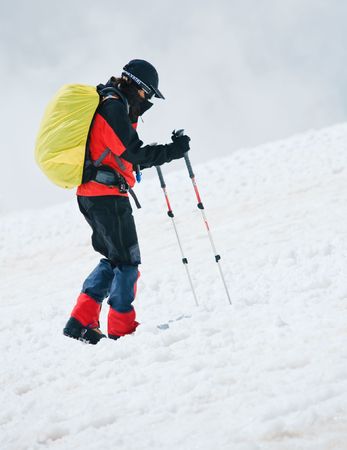Understanding the UK Landscape
Exploring the UK with your dog is a truly rewarding experience, offering a wealth of scenic routes and diverse terrains. From the rugged peaks of the Lake District to the gentle rolling hills of the Cotswolds, Britain’s countryside provides an ever-changing backdrop for dog walks. However, each landscape presents its own challenges and considerations when it comes to injury prevention. The rights of way system in the UK is unique, granting walkers and their dogs access to an extensive network of public footpaths, bridleways, and open access land. It’s essential to familiarise yourself with local signage and regulations, as some paths may traverse farmland or sensitive wildlife areas where dogs should be kept on leads. Seasonal weather variations also play a significant role; muddy winter trails can increase the risk of slips for both humans and canines, while summer heatwaves may lead to overheating or paw pad injuries on hot tarmac. By understanding these factors and preparing accordingly, you can ensure safe and enjoyable adventures across Britain’s stunning landscapes for both you and your four-legged companion.
2. Preparing for a Safe Walk
Setting off on a dog walk across the UK requires more than just enthusiasm; it calls for thoughtful preparation to ensure both you and your canine companion stay safe and comfortable. The British weather is famously unpredictable, so having the right kit and planning ahead can make all the difference.
Essential Kit Checklist
| Item | Purpose | UK Tips |
|---|---|---|
| Lead (Leash) | Control and safety in public spaces | Retractable leads are handy in parks, but fixed leads are safer near roads or livestock |
| Collar & ID Tag | Legal requirement and identification | ID tag must have your name and address as per UK law; consider adding your phone number |
| Harness | Reduces strain on dog’s neck, better control | Especially useful for larger breeds or dogs prone to pulling |
| Weather-Appropriate Attire | Keeps both walker and dog comfortable and safe | Packed waterproofs, high-visibility vests for dark evenings, cooling coats in summer |
| Poo Bags | Clean up after your dog—legal and courteous | Councils issue fines for not picking up; always bring extras! |
| Water & Bowl | Stay hydrated, especially on longer walks | Portable, collapsible bowls are lightweight and practical for travel |
Planning Your Route: Safety First
The UK boasts a vast network of footpaths, bridleways, and national trails. Before setting off, check if your chosen route is dog-friendly—some areas restrict dogs during lambing season or to protect wildlife. Local council websites and walking apps often provide up-to-date information on accessible routes and any temporary closures.
Key Considerations When Planning:
- Avoid busy roads: Opt for quieter lanes or designated footpaths where possible.
- Livestock awareness: In rural areas, keep dogs on leads around farm animals. Dogs worrying livestock is a serious offence in the UK.
- Check local guidance: Some beaches ban dogs in summer months, while certain parks may require leads at all times.
- Accessibility: Consider terrain—stiles or steep paths may be challenging for less mobile dogs (and owners!).
A Note on Weather Preparedness:
The British climate can shift quickly from sunshine to showers. Always pack an extra layer or raincoat for yourself, and consider a drying towel for your dog. In winter, watch out for icy patches; in summer, avoid midday heat to prevent paw burns on hot pavements. Preparation is key to a safe and enjoyable outing for everyone involved.

3. Common Injuries and Prevention for Dogs
Exploring the UK with your dog—whether meandering through rural bridleways or navigating city parks—can expose your four-legged friend to several common injuries. Knowing what to look out for, and how to prevent mishaps, is essential for a safe and enjoyable adventure together.
Paw Cuts and Abrasions
Britain’s varied terrain, from stony coastal paths to urban pavements, can be tough on sensitive paws. Sharp flints, broken glass, or even discarded tin cans are frequent culprits behind paw cuts. To prevent injuries, inspect paths ahead where possible and avoid areas littered with debris. Consider investing in canine booties for rougher trails, and always check your dogs paws after a walk for any signs of damage or lodged foreign objects.
Heatstroke
While the British climate is generally mild, heatstroke remains a risk during summer spells or unexpected warm days. Dogs can quickly overheat, especially breeds with thick coats or short snouts. Prevent heat-related injuries by walking early in the morning or later in the evening, providing plenty of water breaks, and avoiding strenuous activity during peak temperatures. Never leave your dog unattended in a car—even on a cloudy day—as it can become dangerously hot within minutes.
Encounters with Livestock
The countryside is crisscrossed with public footpaths that often run close to grazing animals. Unfamiliar livestock can pose both an injury risk to your dog and stress to farm animals. Always keep dogs on leads near livestock and observe the Countryside Code. If cattle approach aggressively, release your dog so you can both escape safely; dogs are usually faster and less likely to be harmed if not tethered.
Other Hazards: Ticks and Poisonous Plants
Long grass and woodland walks increase the risk of tick bites, which can lead to Lyme disease. Regularly check your dog’s coat after walks and use appropriate tick prevention products as recommended by your vet. Be aware of toxic plants such as foxglove, yew, or bluebells—common in British parks—which can cause illness if ingested.
Routine Checks and First Aid Preparedness
A quick post-walk health check is invaluable: look for limping, swelling, or unusual behaviour that may signal injury. Carrying a basic first aid kit—including antiseptic wipes, bandages, and tweezers—ensures you can address minor problems before they escalate. With vigilance and preparation, you’ll help ensure every walk across the UK is memorable for all the right reasons.
4. Looking After Yourself: Walker Safety
Walking with your dog across the varied landscapes of the UK is a rewarding experience, but it’s essential to look after your own safety as much as your canine companion’s. British footpaths can present unique challenges, from slippery stiles in the Lake District to uneven coastal paths in Cornwall. Here are some best practices for preventing common injuries such as slips, trips, and falls, specifically tailored to typical UK conditions.
Common Causes of Walker Injuries in the UK
| Hazard | Description | Where It’s Common |
|---|---|---|
| Muddy Slopes | Wet weather turns grassy slopes and woodland trails into slip hazards. | Pennines, Peak District, Scottish Highlands |
| Loose Stones & Rocks | Unstable surfaces cause trips or ankle twists. | Coastal paths, Yorkshire Dales, Dartmoor |
| Stiles & Gates | Slippery or awkward steps increase fall risk. | Rural public footpaths nationwide |
| Pavement Edges & Kerbs | Uneven urban footways are a trip hazard. | Towns and cities across the UK |
Best Practices for Injury Prevention
- Choose Proper Footwear: Invest in well-fitted walking boots with good grip—vital for muddy or rocky terrain.
- Pace Yourself: Take your time on tricky sections, particularly when navigating stone stiles or steep descents.
- Use Walking Poles: These provide extra stability on uneven ground or when descending slippery slopes.
- Check the Weather: British weather changes rapidly. Carry waterproofs and consider postponing if heavy rain is forecast, which can make many routes treacherous.
- Stay Visible: Wear bright clothing or a hi-vis vest if you’re near roads or in low light—helpful during foggy mornings so common in the UK.
- Avoid Distractions: Keep leads short near hazards and stay alert; checking your phone while walking can easily lead to a stumble over a hidden tree root or kerb.
- Carry a First Aid Kit: Include plasters, antiseptic wipes, and blister pads for minor incidents—many UK pharmacies sell compact kits perfect for walkers.
A Practical Example: Navigating a Muddy Cotswold Lane
If you’re traversing a typical Cotswold lane after rainfall, expect slick clay underfoot. Slow your pace, keep your weight balanced over your feet, and use any available handrail or stick for support. Encourage your dog to walk beside you rather than pulling ahead, reducing both your risk of falling and theirs of slipping into a hedge!
5. Etiquette and Legalities
Walking with your dog across the UK isn’t just about the scenery and fresh air—it’s also about being a responsible walker who respects both the law and the countryside. Understanding the essentials of etiquette and legal obligations is crucial to ensure safety for you, your canine companion, and everyone else you encounter on your journey.
The Countryside Code: Your Guiding Principles
The Countryside Code is a set of guidelines unique to the UK, designed to help everyone enjoy rural areas while protecting them for future generations. It urges walkers to “Respect, Protect, and Enjoy.” For dog owners, this means keeping dogs under close control, particularly around livestock and nesting birds, sticking to marked footpaths, and always cleaning up after your pet. Gates should be left as found, and it’s essential not to disturb wildlife or damage crops.
Dog Control Laws Across the UK
UK legislation around dogs is clear: Public Spaces Protection Orders (PSPOs) may require you to keep your dog on a lead in certain areas—especially near children’s play spaces or nature reserves. Dogs must wear a collar with an identity tag when out in public. Failing to pick up after your dog can result in substantial fines, as can allowing a dog to worry livestock—sheep-worrying laws are strictly enforced in rural communities.
Considerate Walking: Wildlife, Livestock, and Fellow Ramblers
Being considerate goes beyond legality; it’s about community spirit. When walking near livestock, always put your dog on a lead but release it if chased by cattle for your own safety. Avoid letting dogs run freely during lambing or bird nesting seasons. Respect fellow walkers—step aside on narrow paths, especially for those with mobility aids or young children. Engage in friendly greetings (“Good morning!” is always appreciated) and be mindful of noise levels so as not to disturb the tranquillity that many seek in the countryside.
By adhering to these etiquette guidelines and legal requirements, you contribute to safer, more enjoyable walks for all—and foster positive relationships between dog owners, landowners, and local communities throughout the UK.
6. What to Do When Things Go Wrong
Even with the best preparation, unexpected incidents can happen while walking with your dog across the UK’s diverse landscapes. Whether it’s a twisted ankle on a rocky Cotswold path or your dog picking up a thorn in the Yorkshire Dales, knowing how to respond quickly and calmly is vital. Here’s what you need to know about first aid basics for both humans and dogs, handling emergencies, and finding help when you’re far from urban resources.
First Aid Basics for Walkers and Dogs
Carry a compact first aid kit tailored for both yourself and your canine companion. For humans, include essentials like plasters, antiseptic wipes, a bandage, and pain relief tablets. For dogs, pack items such as a tick remover, saline pods for washing wounds, vet wrap (self-adhesive bandage), and a spare lead. Learn how to use these supplies: for example, cleaning minor cuts promptly reduces infection risk for both species, while supporting an injured limb can make all the difference if help is some distance away.
Dealing with Emergencies
If either you or your dog suffers a serious injury—such as suspected fractures, deep cuts, or heatstroke—it’s crucial to stay calm. For walkers: stop moving if you suspect a severe injury and signal for help using your mobile or a whistle. For dogs: keep them still, leash them securely, and assess their breathing and alertness. In summer months, never underestimate the danger of heatstroke; move to shade immediately and offer water if possible.
Finding Help in Rural or Remote Locations
Mobile coverage can be patchy in many British rural areas. Before heading out, check network maps and let someone know your planned route. Download apps like OS Locate or what3words—they’re widely used by British emergency services to pinpoint your location. In true emergencies dial 999 and ask for ‘Mountain Rescue’ or ‘Coastguard’ if appropriate; these teams are well-trained to assist walkers (and their dogs) in remote settings. For less urgent situations but where veterinary care is needed, search “local vet near me” when you have signal or pre-save numbers of rural vets along your route.
Preparation is key, but adaptability and staying level-headed matter just as much when things go awry on Britain’s footpaths. With basic first aid knowledge and awareness of local emergency protocols, you can turn even an unexpected mishap into another chapter of adventure shared with your four-legged friend.


